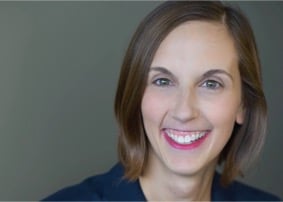5 Steps to Achieving Your Financial Goals
Share this

“Happy New Year! 2018 has got to be a better year for all.”
That’s the text message that greeted me the morning of January 1st. I was excited to see “Happy New Year” but saddened by the second sentence. It really got me thinking about the sender’s mindset.
Abundance vs. Scarcity Mindset
Any year has its’ share of ups and downs. But we can’t play the role of victim. A new year gives us an opportunity to start fresh. And that is directly related to the scarcity versus abundance mindset. In the scarcity mindset, you’re operating from a needy place where you’re constantly concerned that there will never be “enough.” With the abundance mindset, you see the potential to move beyond present circumstances. You have hope in a brighter future. (For related articles, see John Maxwell’s tips or The Simple Dollar’s explanation).
Achieve Your Goals
Operating with an abundance mindset also ties to goal-setting. You’ve likely heard of SMART goals - specific, measurable, achievable, relevant, and time-bound. Familiarity is one thing, but application may be harder. If you’re serious about reaching your goals in 2018, there are two new books I’d recommend: Finish by Jon Acuff and Your Best Year Ever by Michael Hyatt. Although they follow a similar theme, the approach and writing style differs tremendously. Acuff adds humor, plenty of practical examples, and research-backed evidence. Hyatt took his popular “Best Year Ever” e-course and converted it to a book, offering a structured 5-step plan to achieving important goals. He even includes a life assessment tool for progress checks.
Beat Perfectionism
The main premise of Acuff’s book is that we need to beat perfectionism to truly finish. Perfectionism shows up the day after we get started and then rears its ugly head again when we’re close to finishing. We need to make goals fun; if you don’t enjoy running, don’t set a goal to run a marathon this year. To avoid shiny-object syndrome, Acuff also encourages you to focus on one goal at a time rather than trying to work simultaneously on several different goals.
Follow a Plan
Hyatt encourages you to have eight to ten annual goals spread among interrelated life domains. For instance, if your faith relationship is strong, it may be easier to cultivate a stronger relationship with your children and coworkers. Michael Hyatt also discusses the importance of setting both habit and achievement goals. If your achievement goal is to read 30 books by December 31, your habit goal may be to read 30 minutes nightly, beginning today. Finally, Hyatt challenges you to uncover your “why” behind the goals; in other words, connect with your key motivations and identify potential stumbling blocks.
The Best is Yet to Come
Since I’m all about practical application, let’s walk through an example. Suppose you want to increase your family’s financial net worth by $50,000 in 2018. Below are some of the principles, borrowed from either Acuff or Hyatt's book, that you may want to follow.
1.BELIEVE THE POSSIBILITY.
Start with an abundance mindset and identify self-limiting beliefs that may have held you back in the past. Considering developing a simple mantra that you repeat verbally each day, such as “I am worthy of a bright financial future.” Even if you’ve struggled with debt in the past, don’t let that hold you back from achieving this goal.
2.DESIGN YOUR FUTURE.
Work through the SMART framework, establishing both achievement and habit goals. Your achievement goal is to increase your family’s financial net worth by $50,000 by December 31, 2018. Perhaps one habit goal is to contribute $1,541.67 monthly to your 401(k) plan ($18,500 is the max employee contribution in 2018) and $2,500 monthly to your emergency fund. The additional $1,500 of your big $50,000 goal could be accomplished through market appreciation or an employer 401(k) contribution.
3.DETERMINE YOUR WHY.
Figure out why this goal is truly meaningful to you. Will it help you to retire one year early? Are you saving for a big trip in 2019? When $2,500 monthly savings outside of the 401(k) seems like too much, reconnect with this “why.”
4.CUT THE GOAL IN HALF.
Maybe $50,000 truly is out of reach. Would cutting the goal in half to $25,000 make the difference between achieving your goal and letting it disintegrate? Your original goal was $50K by December 31. Perhaps a compromise is $25K by September 30. The beauty of goals is that they can be revised. You don’t want to be like 92% of people whose New Years’ resolutions fail within a matter of weeks.
5.USE DATA TO CELEBRATE PROGRESS.
Know ahead of time what rewards you will use to celebrate small wins. Make the incentives meaningful to you, and find a tracking tool to monitor progress. My clients have access to an online portal that shows all investment accounts, but a simple Excel file that you manually update monthly could work, too.
Looking Ahead
Hopefully, this gives you a chance to start the new year on the right foot. Given the major tax reform that happened a few weeks ago, I’d like to focus January and February 2018 articles on that topic. There is still a lot of confusion and concern that tax reform may hurt, not help, U.S. families. I want to dispel those myths.
ACTION ITEM: What is one goal you're working towards in 2018 that scares you a bit?
Forever Faithful,
Deb Meyer
P.S. As a fee-only financial planner, my only compensation comes directly from clients. I don’t earn any commission from recommending books or other products. In fact, I recently purchased a few copies of the books as a welcome gift for new WorthyNest clients.
This article originally appeared on WorthyNest
 About the Author
About the Author
Deborah Meyer, CPA/PFS, CFP®, is a fee-only financial planner and investment advisor based in Saint Charles, Missouri who serves clients nationally. As the owner of WorthyNest, Deb educates and empowers families to build long-term wealth. She is a professional contributor to Kiplinger and Investopedia, and her financial advice has been featured by Forbes, Huffington Post, and Yahoo Finance.
Do you know XYPN advisors provide virtual services? They can work with clients in any state! View Deborah's profile
Share this
Subscribe by email
You May Also Like
These Related Stories

The Right Financial Tools

Here’s How to Easily Create a Budget



